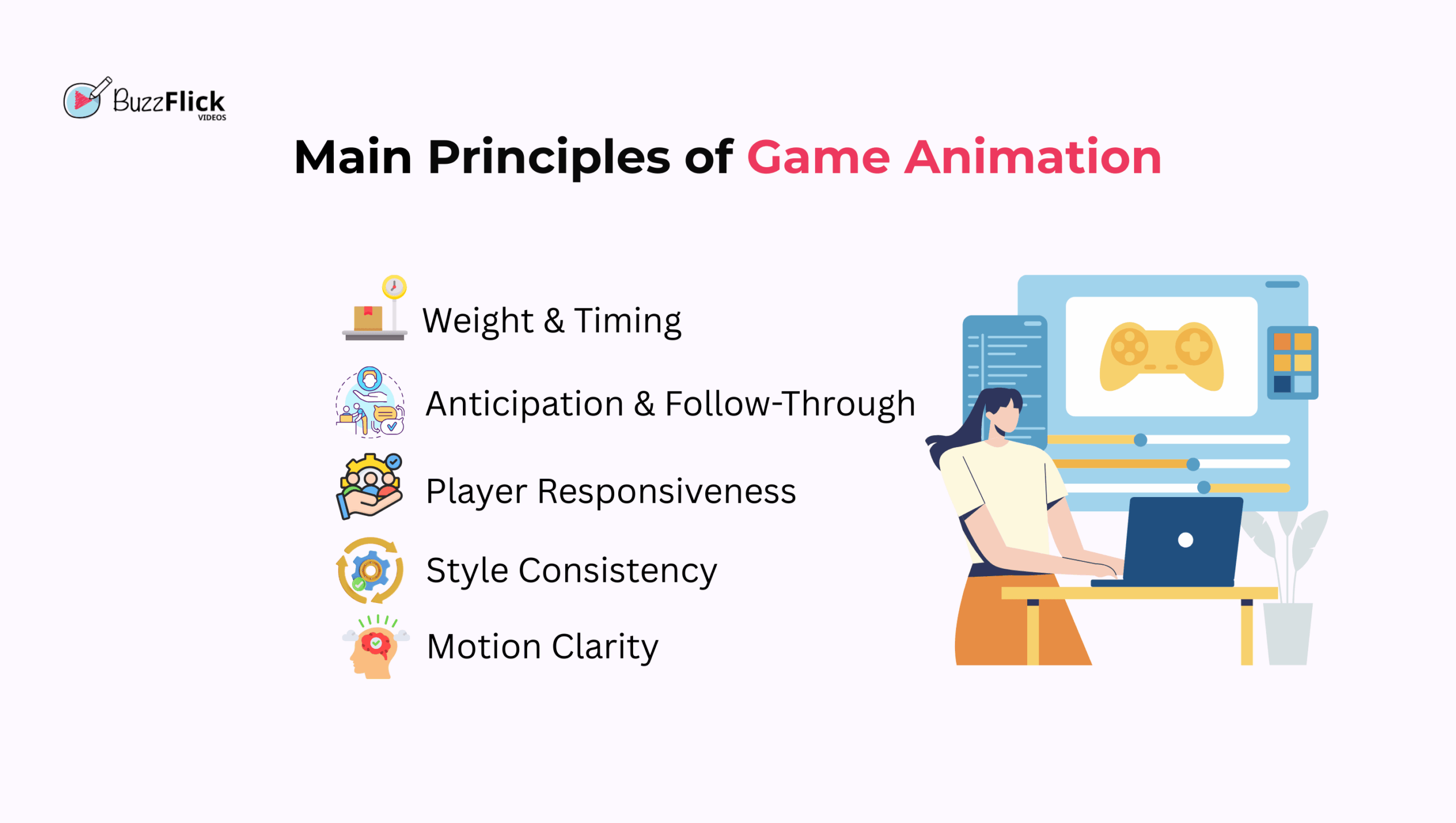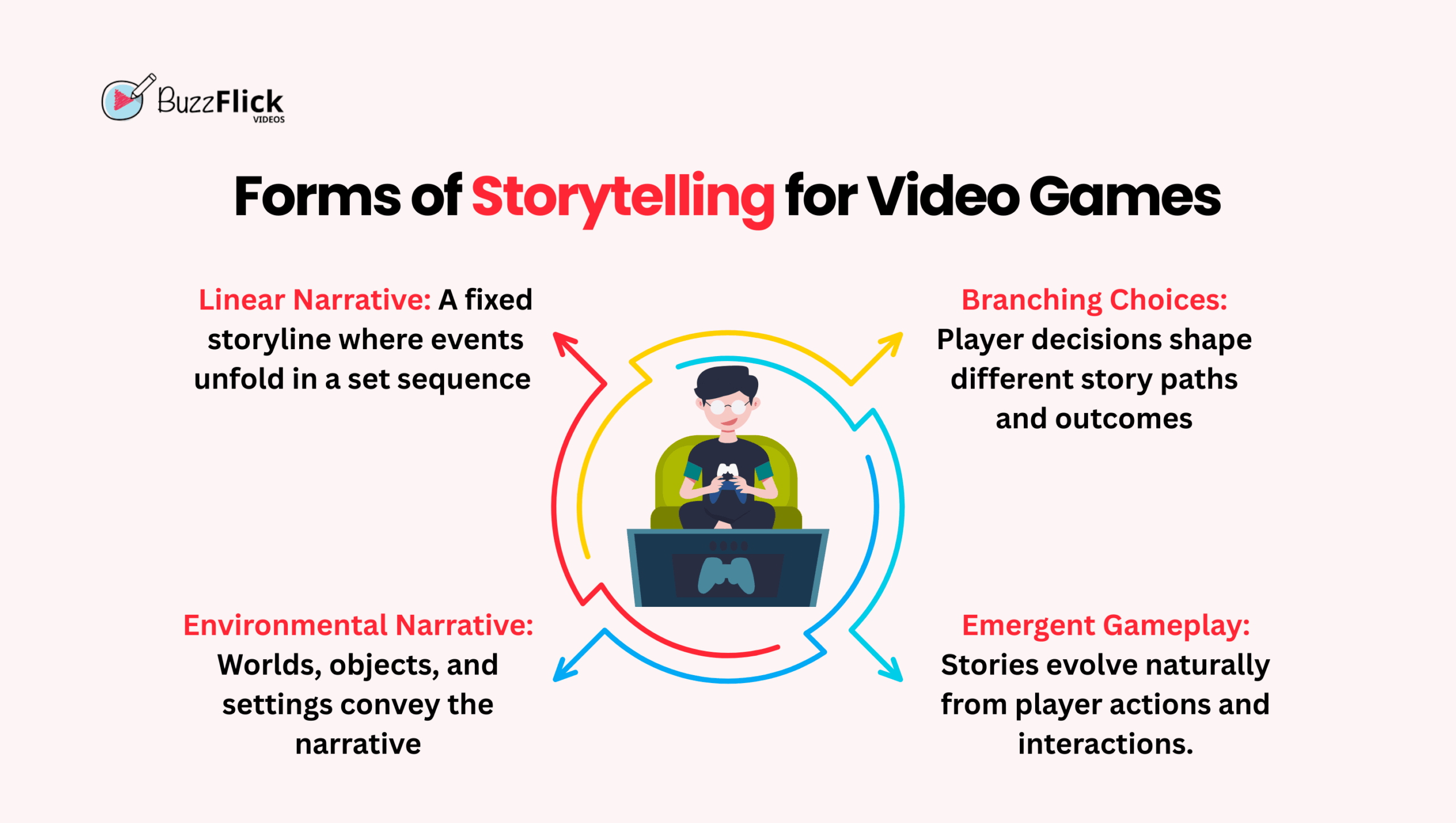- Author: Hafsa Rasool
Date: Sep 4, 2025 - Category : Gaming Animation

Hello folks. Have you ever played a game where every scene, each move, and gesture just feels real? It is not just because of codes and pixels, but it is due to one main factor, and that is Game Animation. Behind every jaw-dropping cinematic, every perfectly timed character move, and every emotional cutscene lies animation for games, the unsung hero of modern storytelling and gameplay.
Gaming is no longer only about levels, guns, or cool graphics. It’s about emotional connection. Gamers want to experience the story, be inside of it, and respond to it. That connection is more than writing and graphics—it’s character movement, how the world responds, and how the narrative flows through motion. That’s where video game animation magic begins.
In this post, we will discuss in depth the hidden power of gaming animations. Also, we will delve into how animation crafts storytelling, enhances immersion, and keeps player stuck to their screens. From principles of game animation design to storytelling techniques, cutscenes, and player agency, we’ll uncover how motion breathes soul into games.
So, grab your controller, because we’re about to break down why animation is the backbone that makes a good game unforgettable.
At its simplest level, Game Animation is the art of designing movement and motion for characters, environments, and interactivity within a game. As opposed to the traditional 2D animation or television storytelling, game animation is extremely interactive, not just meant to be aesthetically pleasing, but to act dynamically in response to input from the player.
Consider a character leaping between buildings in Assassin’s Creed. That jump isn’t simply a nice motion—it’s well-crafted 3d animation game design that combines physics, narrative, and user experience into a fluid act.
Put another way, video game animation is not all about flashy visuals—it’s really about designing responsiveness, realism, and emotional depth that enable people to feel like they’re experiencing another world.

Just as traditional animation adheres to Disney’s 12 principles, game design animation also has its golden rules. Some of the most essential ones are:
The movements should feel real. A heavy sword should swing more slowly than a dagger, and a big character shouldn’t move with the weightlessness of a feather.
Good game animation design also involves anticipation—such as drawing back before punching—and follow-through, as in the slight backward movement after hitting.
Games are not movies. Animations need to react immediately to what the user is doing, whether dodging, running, or aiming.
The most effective video game animation looks cohesive. If a character is super-realistic and another one appears cartoon-like, immersion is lost.
Gamers need to realize what’s going on immediately by way of animation—whether a character is injured, attacking, or interacting.
By integrating these concepts, game developers make sure that game animation not only looks great but also reinforces gameplay itself.
Player engagement is not necessarily about difficulty settings or payoff. It is about immersion. And immersion is derived from realistic motion.
Finally, animation for games makes you care. And in the world of video production, if you care, you continue playing.

In video games, storytelling is offered in various forms, and animation in game development plays a central role in all of them.
Just like in films, players experience a predetermined story. Here, game animation complements scripted scenes. Consider Uncharted’s stunning chases.
Choices have consequences. Games such as The Witcher 3 employ animation for games to mirror player choice—expression, character response, and even fighting style alter depending on decisions.
Occasionally, the story is not told overtly but within the environment. Gaming animated visuals—such as dimming torches, crumbling bridges, or NPC actions—impart depth to the narrative.
Sandbox games such as Minecraft are dependent on the players to build their own stories. In such cases, animation game design facilitates smoothness in infinite, player-created worlds.
Cutscenes are the video game animation crown jewels. They give a cinematic break from gameplay to focus attention on important story moments.
If implemented correctly, cutscenes bring animation for games from background design to memorable cinematic experiences.
What makes games unique from films? Player agency—the capability to alter the outcome.
Without gaming animated feedback, choices become meaningless. With it, each decision comes alive.
Story turns gameplay into an experience. But how is it presented? Through video game animation that bridges the gap between story beats and player actions.
Great narratives make gamers recall a game for decades. But it’s animation game design that turns those narratives into unforgettable experiences.
Certain storytelling strategies are exclusive to gaming, and they rest strongly on game animation.
This is a question that all developers should ask: how can we design animations and games based on the needs of a user?
User-centric animation for games makes sure not only of beauty, but also of inclusivity and usability.
There are some games that have revolutionized what the best video game animation should look like:
These games represent the untapped potential of game animation—not merely as ornamentation, but as narrative itself.
Let’s compare animation in games vs films. Although both are based on comparable artistic ideas, game design animation differs greatly from movies. Every frame of a movie, even the best animated movies like Spirited Away or Toy Story, is carefully crafted to manage mood and tempo. However, animations in games have to adjust to erratic user inputs, combining movements like sprinting, leaping, or fighting without detracting from the immersive experience.
Game animation is more intricate than cinema because of this interactivity. In order to provide seamless transitions regardless of player behavior, developers must create animations that react instantaneously to changes. Game animation is both technically challenging and essential to gameplay and narrative, in contrast to cinema, which has set timing.
At Buzzflick, we believe that the gaming future is based on storytelling fueled by engaging animation game design. Players in 2025 and beyond want more than passive worlds—they require emotions, realism, and interactive magic.
Here’s how Buzzflick assists:
Whether developing a small indie game or an AAA title, Buzzflick has your game animation design achieving new standards for storytelling and gameplay. Along with that, TekRevol launches RevolGames, a custom game development studio specializing in immersive and creative games.
Game animation’s secret strength is its potential to make us feel—to translate controllers into feelings and pixels into unforgettable experiences. From responsive gameplay to massive cutscenes, game animation is what turns mechanics into memories.
And as the year 2025 draws near, businesses like Buzzflick are one of the best animation production companies to keep that soul burning brighter than ever.
The amount of time that it takes to animate a character varies depending on how complex the game is and how much detail is needed. A basic 2D character with some simple movements can take a couple of days, whereas a completely rigged 3D character with realistic movement, facial expressions, and combat animations can take several weeks or even months. Large studios tend to employ motion capture to accelerate production, while independent groups might use hand-designed game animation layouts for productivity.
The trade depends on both animation software and game engines. Autodesk Maya, Blender, MotionBuilder, and 3ds Max are used for rigging and animation. The game engines Unreal Engine and Unity incorporate these animations into games. Motion capture garments and AI-based animation tools also start to make their appearance in commercial animation for games pipelines.
Indie developers are usually limited in their resources, so they will resort to innovative alternatives. Asset stores (such as Unity Asset Store or Unreal Marketplace) sell pre-designed animations at modest prices. Procedural animation methods assist in producing motion algorithmically, and software such as Blender offers free and open-source solutions for rigging and animating characters. By concentrating on style consistency instead of hyper-realism, most indie games produce distinctive and captivating gaming animated experiences.
Yes, AI is being more and more applied to streamline animation for video games. Machine learning algorithms can create realistic movement of characters, transition between animations smoothly, or even forecast how a character will move based on the environment. Procedural animation powered by AI also assists in creating realistic crowds or dynamic NPC behavior without the need for individual moves scripted by the animator. With time, AI will revolutionize game animation design to make development speedier and more scalable.

Get A Custom Quote Now
Get Video Animation at Reasonable Prices at BuzzFlick! Get A Quote!